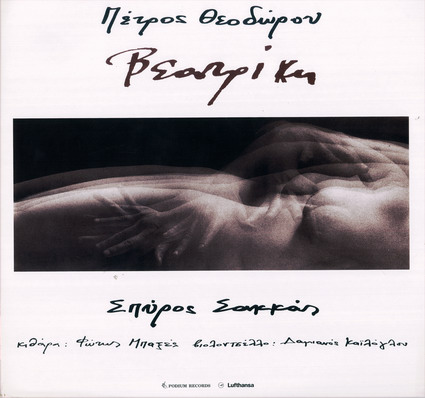So, in this work, I see the idealised «Other» as an unapproachable, mythical image, as depicted so often in literature, especially the romantic one (whereas in «3000 Years of being in love» the point of sketching the «Other» is 100% different and much more human).
Such an idealised figure I believe that exists deeply inside every human soul. Merging with it is being in love (eros), is getting diffused into the «Other», is finally a total and absolute breaking of the borders of self – consciousness.
Of course, while getting adults, sooner or later, we all have to deal with this figure. To decide if we ‘ll go on looking for this imaginary but perfect confluence or if we ‘ll try to live in reality.
Of course we can as well attempt to combine both tendencies.
But this «third» pathway is already the beginning of another subject, so, let’ s return to «Beatrice», as the idealised «Other» in every human soul.
Let’ s see this figure, motive for any kind of desires and passions for us, as a silent, mysterious goddess, barricaded behind its opacity. A perfect canvas on which we embroider our emotions in all their excess. And now, what if this chilly angel existing within us, came to life as a simple human being acquiring a name – «Beatrice» for instance?
Then we ‘d be faced with a puppet brought to life. A living doll. A human being with flesh and bones, living and dreaming just like us. Singing, desiring, yearning, aching, whispering.
My music makes no attempt to describe or explain this process of metamorphosis. It takes it for granted and simply presents «snapshots» of this now vulnerable goddess enduring her mortality in our cruel world.
In the songs 2 – 5 we can envision Beatrice, the incarnated goddess, as a simple woman experiencing the feeling of being in-love, talking to us as if we were one person, the person with whom she is in love. In the prelude and the 6th song we answer to her.
The three romances are just pieces inspired by all these ideas, referring to Beatrice’s own emotions.
The most important point for this fictitious figure, to whom Hariklia instilled human qualities, is that, for her, it is US who became Beatrice’s idealised «Other»…
Being human, she yearns for union with us.
She longs to talk with us, borrowing verses, phrases, songs. Borrowing all the words that we used when we were in love motivated by her onetime divine existence in our souls.
But precisely because she identifies herself just as human ignoring her idealised dimensions in our souls, precisely because she is now like us, she can’t possibly attain union with us, with our world. S
he does not know that, for us, her raison d’ etre is precisely to be distant and indefinable and that in a very cruel sense she is «useless» as human, «useless» as a definable and concrete creature of this world.
And in the end she stands «before» us (not «with» us), as «idea and naked moment», bewildered by the heavy role of an idealised figure that we have allotted her without even asking, as lonely as she was before we allowed her to stand before us in her human form.

